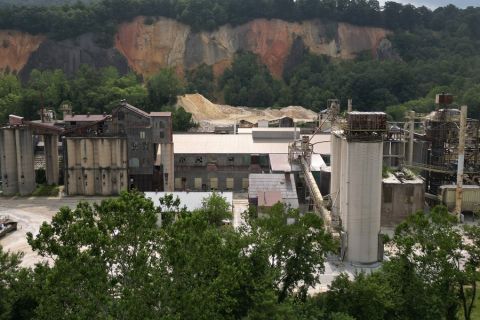The last time Colorado experienced an oil production rate as high as that of 2012, US President John F. Kennedy was “Time Magazine’s” Man of the Year, and the Berlin Wall had just begun construction.
According to a recent update provided by the Colorado Oil and Gas Conservation Commission, the state’s oil production in 2012 reached its highest level since 1961. In its initial calculation of total oil produced the commission found that production exceeded 48 MMbbl, representing a 24% increase over 2011, which itself saw a 20% increase over oil produced in 2010.
The state has experienced a steady increase in the volume of both gas and oil, with oil increasing since 1999 and gas increasing since 1990. According to the commission, the growth in oil production can be attributed primarily to the giant Wattenberg field in the Denver- Julesburg (DJ) basin. The commission attributed the higher numbers to operators there “combining improving technologies in horizontal drilling and hydraulic fracturing to increase production from the Niobrara formation.”
The Niobrara Total Petroleum System
According to an analysis performed by the US Geological Survey (USGS), the Niobrara Total Petroleum System (NTPS) is a self-sourced system that produces oil and natural gas from fractured carbonate rock reservoirs in the Upper Cretaceous Niobrara formation and equivalent rocks of the Southwestern Wyoming Province.
Encompassing the area of the eastern and southeastern Greater Green River basin of southwestern Wyoming and northwestern Colorado, the Niobrara formation was deposited during a major Late Cretaceous marine transgressive cycle that created conditions favorable for the deposition of fine-grained marine carbonate rocks and the preservation of organic matter.
Ranging in thickness from 275 m to 550 m (900 ft to 1,800 ft), the Niobrara consists mainly of interbedded organic-rich shale, calcareous shale, and marl. The USGS analysis found that the hydrocarbon source beds predominantly contain Type-II oil-prone organic matter with total organic carbon contents ranging from 0.85 to 2.75 weight percent. Thermal maturities range from less than 0.60% Ralong the eastern and southern flanks of the basin to greater than 1.35% Rin deeper parts of the basin. The analysis found that because of the fine-grained nature of the Niobrara, petroleum production is dependent on fractures that develop in hard, brittle, carbonate-rich zones.
Burial-history reconstructions and petroleum-generation models show that the Niobrara entered the oil window between 72 million and 67 million years ago. Along the shallow flanks of the basin the Niobrara remains in the oil window. With continued subsidence and burial in the deeper portions of the basin, the Niobrara reached thermal maturities sufficient to crack oil to gas.
The USGS subdivided the NTPS into two assessment units based on thermal maturity: a continuous oil assessment unit and a continuous gas assessment unit. The continuous oil assessment unit is located in the updip parts of the eastern and southern flanks of the basin where thermal maturities are less than 1.35% Ro and generally are considered to be within the oil window. At the time the analysis was conducted in 2005, the USGS said that the mean volume estimate of undiscovered oil resource for the Niobrara continuous oil assessment unit was 103.6 MMbbl.
New JV extends presence in the Wattenberg
A new joint venture (JV) effort between Synergy Resources and Vecta Oil and Gas has plans to jointly develop oil and gas leases in Morgan and Weld counties, Colo., with each company contributing acreage to the deal.
According to a statement issued by Synergy Resources, the first area of mutual interest under the deal to be developed covers 45,661 net acres, with Synergy holding a 35% working interest. The second area covers close to 3,000 net acres and a 65% working interest in areas being held by Synergy, the designated operator of both areas.
Synergy said that the two companies will work together to acquire new proprietary seismic data across a portion of the oil and gas leases in the JV. Plans to drill a horizontal well for evaluation purposes on one of the leases also were reported by Synergy. The JV said that the drilling of an initial well to test the Greenhorn formation is expected to occur by the end of October 2013.
The JV extends the net acreage position for Synergy in the Wattenberg Extension Area by 36% to approximately 19,400 acres.
In a recent operations update on its Wattenberg field assets, Synergy Resources Corp. said that it successfully completed and brought into production 22 vertical wells. Of the 22 operated wells, 20 were completed in the Codell formation, one commingled in the Codell/Niobrara, and one in the Greenhorn formation. Six of the wells were brought into production during December and January; the remaining 16 wells came online the third week of February. Synergy owns a 100% working interest in these wells.
Operator roundup
Bill Barrett Corp. recently completed a horizontal Niobrara exploratory test, the #24-10H Noyer in Laramie County, Wyo., in the northern flank of the DJ basin. The test initially flowed 319 b/d of oil, with production from the horizontal lateral extending 2,327 m (7,635 ft) with a total depth of 3,546 m (11,635 ft) and a true vertical depth of 2,217 m (7,273 ft). Tested on an 18/ 64 -in. choke, the tubing pressure was 4,200 psi following an 18-stage fracture stimulation between 2,353 m and 3,448 m (7,721 and 11,312 ft).
In a February 2013 presentation Bill Barrett Corp. said that its DJ basin program is “rapidly growing,” with approximately 65 gross and 45 net operated wells planned for 2013. In addition, the company plans to participate in approximately 20 wells operated by partners. The company’s 2013 drilling plan targets the B bench of the Niobrara formation and is primarily focused on horizontal development drilling.
Pad drilling was initiated by the company in the second half of 2012 with three four-well pads. The average vertical depth drilled was approximately 1,951 m (6,400 ft) plus a 1,219-m (4,000-ft) lateral with an average of 18 fracture-stimulation stages.
The company had, as of year-end 2012, an approximate 74% working interest in production from 298 gross wells and held approximately 76,000 net acres in the program, including approximately 39,700 acres in the northeast Wattenberg where the company plans to concentrate its 2013 drilling program.
In addition to its success in the offshore, Noble Energy also is seeing significant returns with its DJ basin efforts. With net resources of 2.1 Bboe on approximately 640,000 net acres in the basin, the company has focused its development strategy on oil with 85% of its production coming from the oil window, according to a report released in April. The company said that it is rapidly accelerating its development program with 500 wells per year planned in 2016.
The company plans to double its 2012 activity in two years, with 50% more wells in 2013 than in 2012 and 300 actual wells or 350 standardized wells on a 1,372-m (4,500-ft) lateral length. The company is currently expanding its midstream infrastructure to accommodate the increased production.
Two recent reports from Wunderlich Securities Inc. and Morgan Stanley said that Noble is expected to add 200 MMboe to its reserves by year-end 2013. Noble plans to drill 60 long laterals in the Niobrara in 2013, “potentially confirming the design is applicable to much of its DJ basin acreage,” Morgan Stanley said. In addition, the company plans to increase its rate of completions in the Niobrara to 300 this year alone compared to 193 in 2012. The well count is expected to grow to 500 by 2016, according to Wunderlich.
Noble said in March that its DJ basin horizontal Niobrara completion in Weld County, Colo. – the #33LC-68HN Ptasnik-Federal-PC – flowed 318 b/d of oil with 394 b/d of water. The well, located in Section 33-9n-59w, is producing from a horizontal lateral extending 1,983 m (6,506 ft) east to a total depth of 3,188 m (10,459 ft) and a true vertical depth of 1,857 m (6,091 ft). The well was tested after a 17-stage fracturing operation between 2,013 m and 3,157 m (6,604 ft and 10,359 ft). Tested on a 20/ 64 -in. choke, the tubing pressure was 260 psi with a casing pressure of 910 psi.
Pacific Energy Development announced results from three Niobrara completions in Weld County, Colo., that were drilled in the 9,500-acre Indian Peaks 3-D area. The #2 H Logan initially flowed 522 b/d of oil and 360 Mcf/d
of gas. Production from the DJ basin well is from a horizontal lateral in the Niobrara B bench. The lateral extends northeastward to 3,935 m (12,911 ft), with a true vertical depth of 1,863 m (6,112 ft) at a bottomhole in Section 20-7n-59w. The 1,935-m (6350-ft) lateral was tested after a 25-stage fracture stimulation.
Condor Energy Technology’s #2H FFT (Ford Family Trust) well in Section 31-7n-59w was drilled to 3,446 m (11,307 ft) with a vertical depth of 1,881 m (6,172 ft). This venture initially flowed 424 b/d of 32°API gravity oil, 80 Mcf/d of gas, and 984 b/d of water from a horizontal Niobrara interval at 2,016 m to 3,446 m (6,614 ft to 11,307 ft). The #1H Waves is in Section 23-7n-60w and initially flowed 528 b/d of oil and 360 Mcf/d of gas. Production is from a horizontal lateral in the Niobrara B bench zone extending north-northeastward to 3,388 m (11,114 ft), and the true vertical depth is 1,880 m (6,200 ft). The 1,323-m (4,339-ft) lateral was tested following an 18-stage fracture stimulation. Condor has a location staked for a fourth horizontal Niobrara venture in the area at #2H Waves in Section 18-7n-59w. Pacific Energy Development holds a 31% net interest in the Indian Peaks 3-D prospect.
The big news coming out of the Niobrara is WPX Energy’s recent announcement of a shale discovery well the company drilled in its Western Colorado acreage that has produced more than 1 Bcf of natural gas in just more than 100 days of operation. According to the announcement, the discovery well initially produced 16 Mcf/d of gas at a flowing pressure of 7,300 psi. It registered an average production rate of almost 10 Mcf/d over its first 90 days despite being choked back substantially.
At this rate, the Tulsa-based company said that it expects the Niobrara well to produce in its first four months what a typical well in the Piceance basin’s Williams Fork formation produces over its estimated life cycle of 25 to 30 years.
The company believes this discovery has the potential to more than double the company’s proved, probable, and possible reserves, which were around 18 Tcf of gas at yearend 2012. WPX started drilling its second Niobrara well in April and expects to begin completion activities in June.
Recommended Reading
Oil and Gas Chain Reaction: E&P M&A Begets OFS Consolidation
2024-04-26 - Record-breaking E&P consolidation is rippling into oilfield services, with much more M&A on the way.
US Drillers Cut Most Oil Rigs in a Week Since November
2024-04-26 - The number of oil rigs fell by five to 506 this week, while gas rigs fell by one to 105, their lowest since December 2021.
Exxon Mobil, Chevron See Profits Fall in 1Q Earnings
2024-04-26 - Chevron and Exxon Mobil are feeling the pinch of weak energy prices, particularly natural gas, and fuels margins that have cooled in the last year.
Apollo to Buy, Take Private U.S. Silica in $1.85B Deal
2024-04-26 - Apollo will purchase U.S. Silica Holdings at a time when service companies are responding to rampant E&P consolidation by conducting their own M&A.
Marathon Oil Declares 1Q Dividend
2024-04-26 - Marathon Oil’s first quarter 2024 dividend is payable on June 10.



